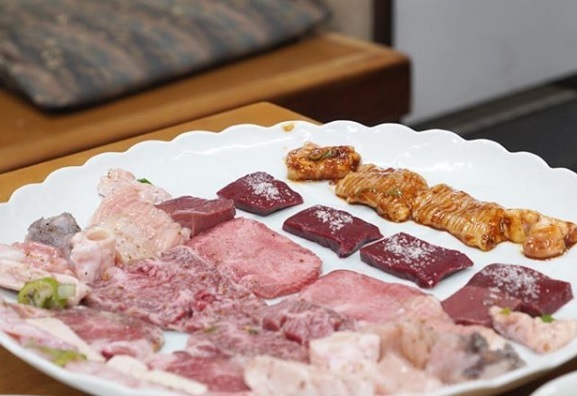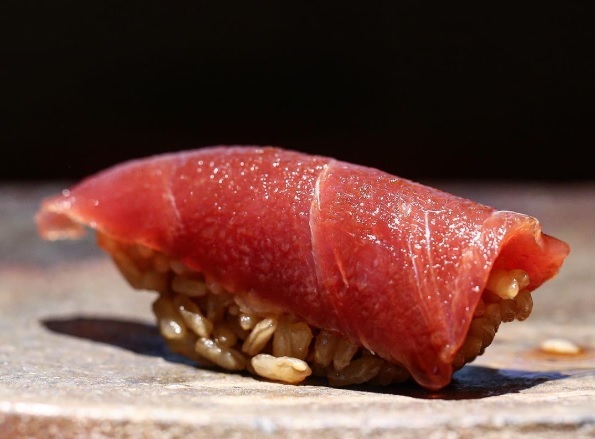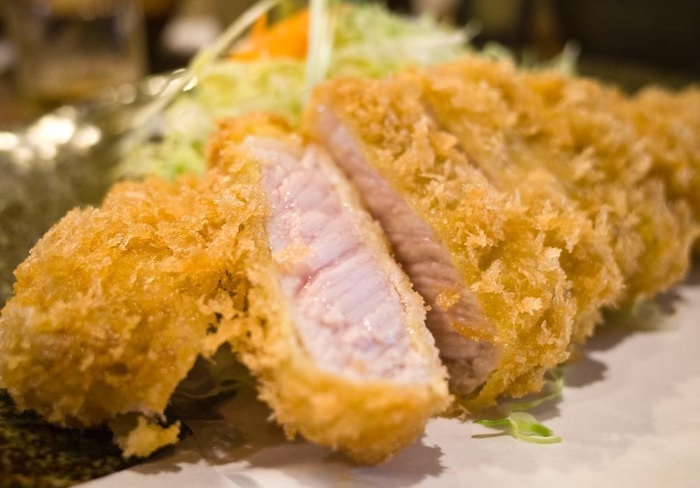The Secret Behind Sushi Rice (Shari)
The flavor of a sushi restaurant's shari is characterized by its balance of vinegar, salt, and sugar. Shari is mainly classified into the following three: strongly flavored with vinegar and salt, mild with reduced vinegar and salt, and sweetened with sugar.
Strong and flavor-packed shari goes incredibly well with tuna belly and fatty fish like cold yellowtail and mackerel.
Pair it with the fat under-belly of tuna for an ecstatic experience.
Sugar-sweetened shari, on the other hand, is perfect for vinegar-pickled fish like gizzard shad and horse mackerel. The shari of sushi made from vinegar-pickled fish, like the Kansai region's pressed mackerel sushi?, is sticky and sweet for a Tokyo-dweller's tastebuds. The sugar here is for lightening the saltiness of the pickled-fish, enhancing its overall flavor.
Vinegar is considered the most important seasoning when making shari. The taste of shari greatly differs depending on whether the vinegar used was red or white.
Red vinegar is made from sake lees produced when making sake from rice rather than from the rice itself.
Many restaurants in Tokyo use red vinegar because it's a tradition of Edo-style sushi.
However, it is also said that sushi restaurants of old used red vinegar due to budget issues rather than its taste.
Red vinegar was a cheaper option than rice vinegar since its main ingredient, sake lees, is a by-product of brewing sake.
Many would pair red vinegar shari with shellfish because it complements the lack of flavor. It has a unique taste not found in rice vinegar, mostly due to it being made from sake lees.
Meanwhile, rice vinegar, depending on its type and brewing, has a clearer taste compared to red vinegar along with a more definite sourness.
The flavor isn't as rich as its red counterpart, but it also doesn't have its quirks. It is generally believed that rice vinegar shari has a clearer taste and is easier to match with all kinds of fish.
There is no universal shari that goes well with all kinds of fish. Each store has its own unique shari flavor. Some shari are salty yet retain the sugar's sweetness.
Some also use red vinegar but have a mellow flavor with none of the usual quirks.
Some even strongly smell of vinegar at first but turn savory once you start chewing.
After going through around 10 to 20 sushi restaurants, you'll eventually come to gain a rough understanding of the direction of the shari's flavor, as well as what goes well with it.
For many sushi chefs, shari is their soul and the most crucial part of sushi. Even if their shari tastes best with gizzard shad, they'll hone their technique so that it will also go with tuna.
Sushi chefs spend their days improving their techniques while pitting their skills against their fellows.
If you're a true sushi lover, think of yourself as being duped and try eating sushi while focusing on the shari.
You'll be surprised after going through a couple of restaurants when you realize that each store has its own uniqueness to its shari.
Being able to quickly and thoroughly understand this uniqueness is a huge step for an enthusiast.
You know you've already become an upstanding sushi enthusiast if things like "The shari here is sweet, so it'll go well gizzard shad" or "I'm gonna go for clams next time" start popping into your head.
◆Representative sushi restaurants that use white vinegar-based shari:
Sukiyabashi Jiro
https://tabelog.com/en/tokyo/A1301/A130101/13002260/
Harutaka
https://tabelog.com/en/tokyo/A1301/A130103/13032283/
Sushi Mizukami
https://tabelog.com/en/tokyo/A1308/A130803/13220742/
Sawada
https://tabelog.com/en/tokyo/A1301/A130101/13001043/
Sushi Hashiguchi
https://tabelog.com/en/tokyo/A1308/A130801/13134517/
◆Representative sushi restaurants that use red vinegar-based shari:
Sushi Saito
https://tabelog.com/en/tokyo/A1308/A130802/13015251/
Shinbashi Shimizu
https://tabelog.com/en/tokyo/A1301/A130103/13002892/
Sushi Arai
https://tabelog.com/en/tokyo/A1301/A130101/13188186/
Hakkoku
https://tabelog.com/en/tokyo/A1301/A130101/13217157/
Register account first.
Register










Comments 3
3
Shi
Love this article! The shari is definitely a very important part of experience. For those of us playing at making sushi at home with access to both akasu and komesu does anyone have any starting points for a shari recipe they'd be willing to share?
guest
Saito-san, thanks for the great article!
Leo Saito
chief editor, TokyoTableTripFor many sushi chefs, shari is their soul and the most crucial part of sushi. Even if their shari tastes best with gizzard shad, they'll hone their technique so that it will also go with tuna.
Sushi chefs spend their days improving their techniques while pitting their skills against their fellows.